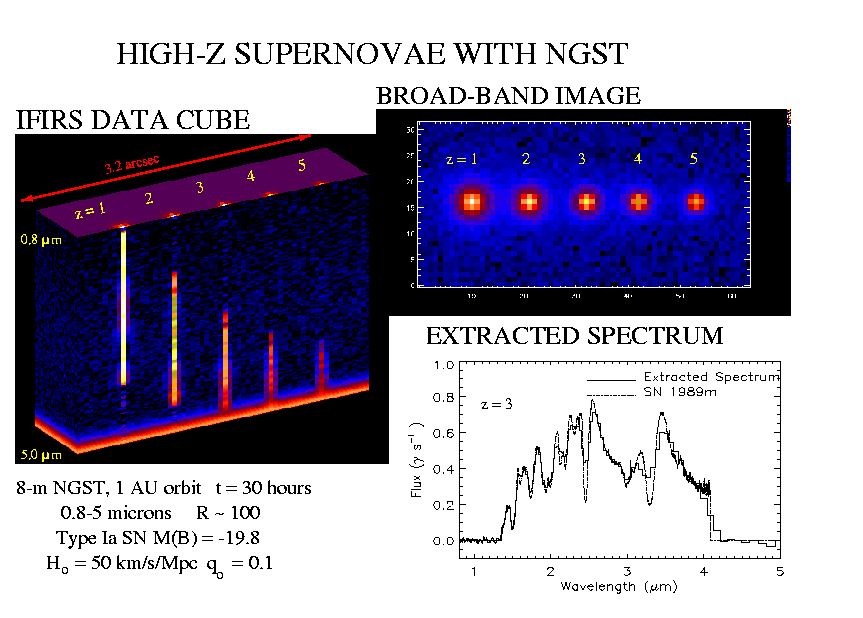

The next data cube  shows
supernova at a range of redshifts. Supernovae at five different redshifts
(1, 2, 3, 4, & 5) can be seen marching down the cube in wavelength
a redshift increases. The absorption bands which are characteristic of
a type Ia supernova are clearly visible.
shows
supernova at a range of redshifts. Supernovae at five different redshifts
(1, 2, 3, 4, & 5) can be seen marching down the cube in wavelength
a redshift increases. The absorption bands which are characteristic of
a type Ia supernova are clearly visible.
An annoted version of this cube shows the wavelength scale and an extraction
of the z=3 supernova spectrum. The top right shows the broad-band image
which accompanies every IFIRS exposure.  The
extracted spectrum is shown at the bottom. If type Ia supernova exist
at high redshift then this simulation shows that IFIRS+NGST will be able
to meausre their spectra and determine cosmological parameters such as
the rate of deceleration of the expansion of the universe and whether or
not there is a cosmological constant.
The
extracted spectrum is shown at the bottom. If type Ia supernova exist
at high redshift then this simulation shows that IFIRS+NGST will be able
to meausre their spectra and determine cosmological parameters such as
the rate of deceleration of the expansion of the universe and whether or
not there is a cosmological constant.
According to simulations by Dahlen
& Fransson there will be several type Ia supernovae in each deep
IFIRS cube, such as the one shown here. Since the supernova spectrum is
encoded within the data cube, supernovae could be discovered solely on
the basis of this signature; there would be no need to schedule multiple
vists to the field to search for objects which vary in brightness.
Back to the Berkeley NGST page.